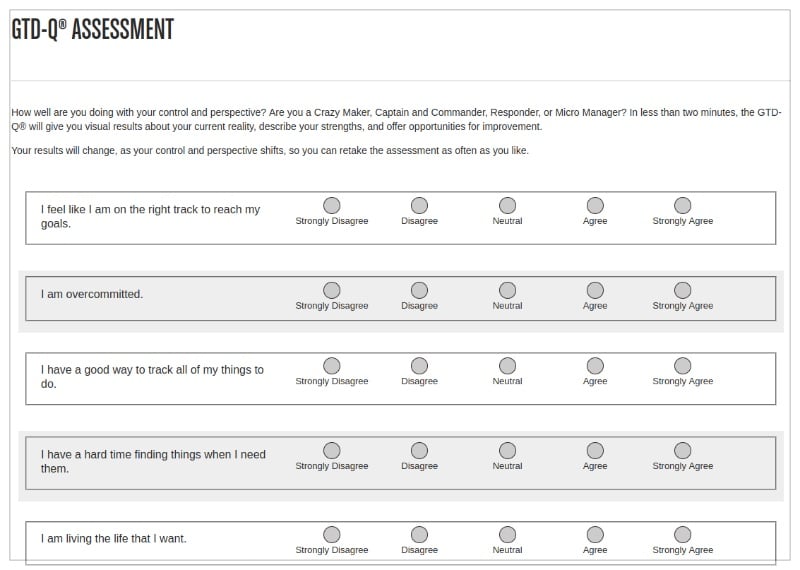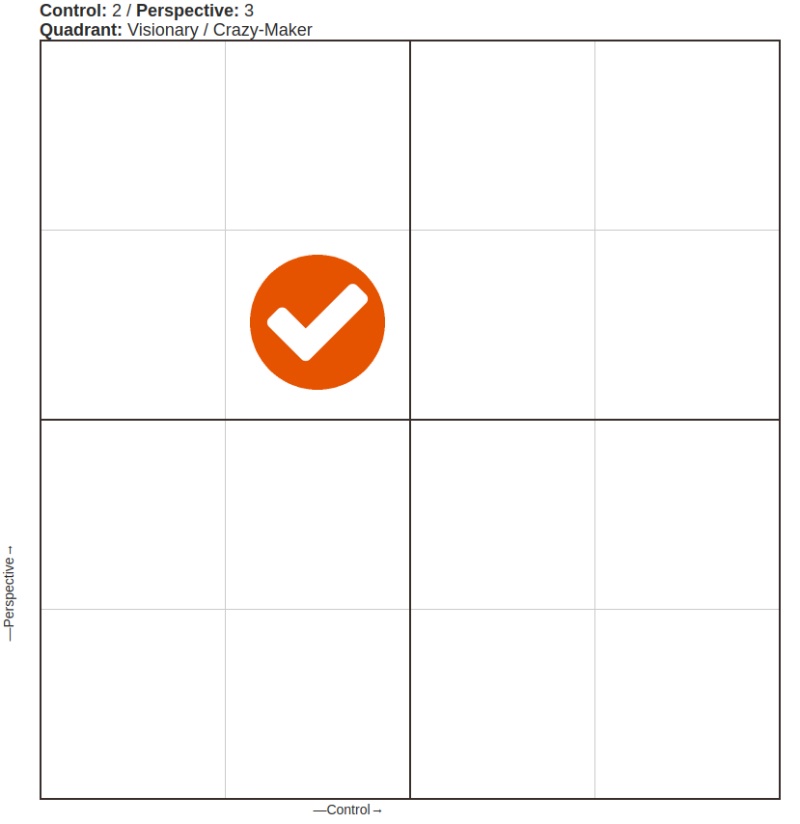I’ve always been interested in finding new ways to boost my productivity.
Recently, a colleague of mine recommended an online productivity assessment tool that he’d tried out. His words caught my attention, especially as he mentioned that the assessment was free – and only took around 2 minutes to complete!
For most people (including myself), productivity is the difference between success and failure.
Just think about your typical working day… However well you plan your tasks at the start of the day, if your productivity falls below par, you’ll quickly find yourself running out of time to complete all your work.
So, what is the online productivity assessment that my colleague recommended?
It’s called the GTD-Q® assessment. Developed by David Allen, the assessment evaluates two key elements of self-management: control and perspective.
While the assessment is not supposed to be a comprehensive overview of the way you work, in just 2 minutes of answering some simple questions, you’ll be able to gain valuable insight into what your personal productivity level currently looks like.
Could a 2-Minute Quiz Help You Get Things Done?
David Allen created his Getting Things Done®(GTD) system after he came to the realization that: “Your mind is for having ideas, not holding them.”
GTD is the work-life management system that has helped countless individuals and organizations bring order from chaos.
People who have undertaken the system report greater performance, capacity and innovation. On top of these things, the system helps alleviate the feeling of being overwhelmed, while at the same time instilling focus, clarity and confidence in the individual.
What does the assessment look like? Well, here’s a screenshot of the first five questions…
There are 18 questions in total, and as I’ve mentioned earlier, it should just take you a couple of minutes to answer them all.
As you can see from the screenshot above, for each question (or statement) that you are presented with, you’ll have a choice of selecting one of the following answers:
- Strongly Disagree
- Disagree
- Neutral
- Agree
- Strongly Agree
It’s important to remember that there are no wrong or right answers in the quiz. Instead, focus on answering all the questions in as open and honest manner as possible. By doing this, you’ll gain the most benefits from taking the assessment.
Once you’ve submitted all your answers, you’ll be immediately presented with an appraisal of your strengths and weaknesses. It’ll look something like this:
The above image shows in a striking visual form how your self-control and perspective determine the way you work – and your level of productivity.
On the results page, you’ll also be given a brief written overview of your strengths and weaknesses, and what you can do to improve these. For instance, the example above has the following wording associated with it:
How the GTD-Q Assessment Can Help You
You’ll probably already know where you stand on some of the questions. For example, “My life is too chaotic” is a dead giveaway, as is “I have a good way to track all of my things to do.”
However, not all of the answers are as straightforward, and it’s the totality of your answers that draws together the assessment’s conclusions.
As you’ve seen from the image above, your test results will place you into one of four quadrants:
- Visionary (Crazy Maker)
- Captain and Commander (Autocrat)
- Responder (Victim)
- Implementer (Micro Manager)
Whichever quadrant you’re placed into, you’ll be given some insights for improving your productivity – or, at the very least, confirmation about what usually challenges you.
Finally, it’s only fair to warn you that the 2-minute assessment is definitely a tool to help sell the GTD system. However, the good news is, that you don’t have to buy or sign-up for anything to see if you’re a Visionary (Crazy Maker), Captain and Commander (Autocrat), Responder (Victim) or Implementer (Micro Manager). You’ll also get the basic insights and advice for free too.
So, don’t hesitate, head over to the GTD-Q assessment now – and discover how you work, and how you could improve your work.















































